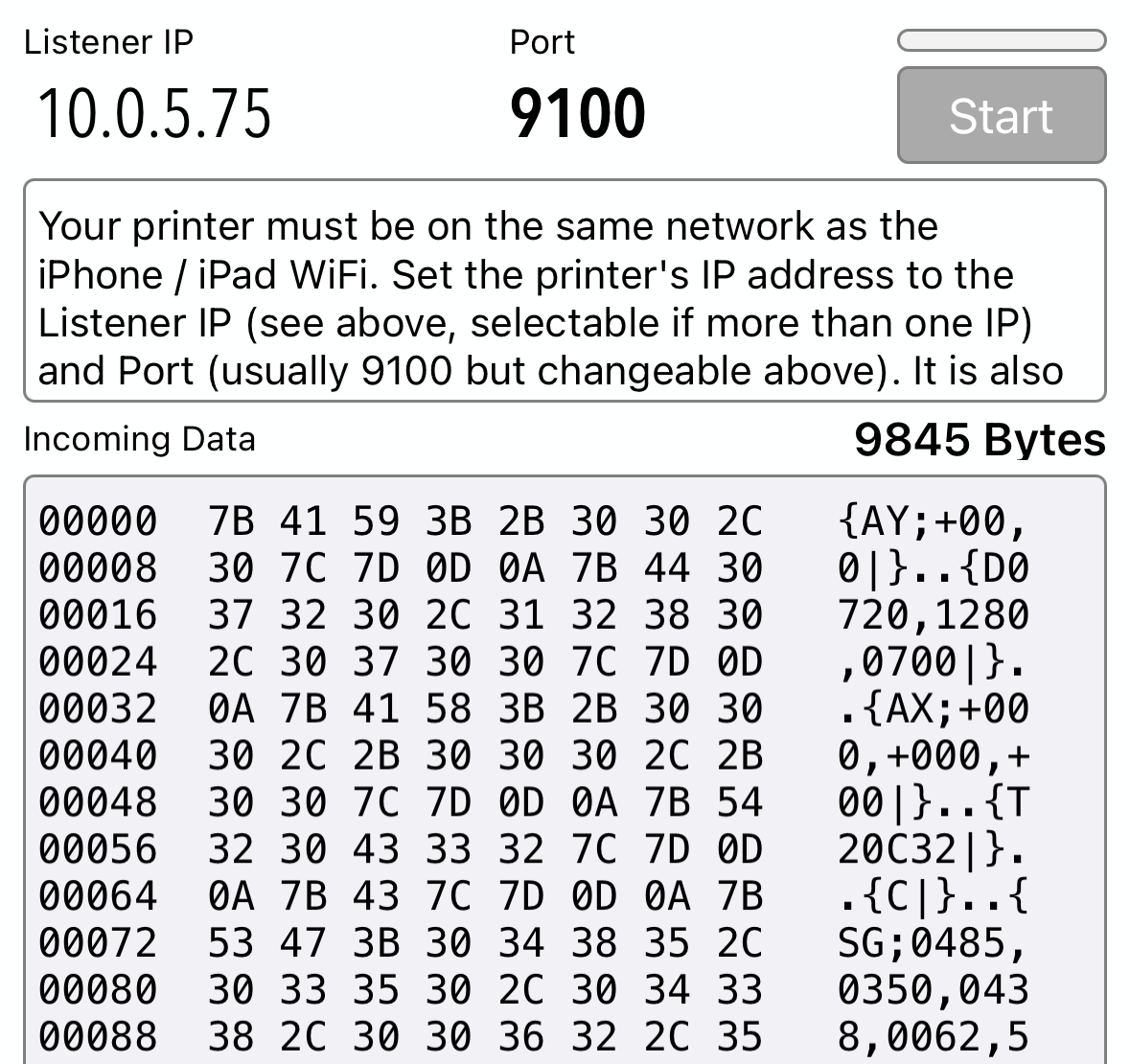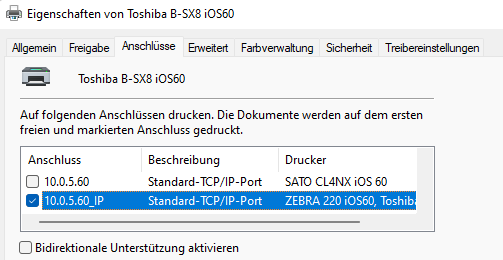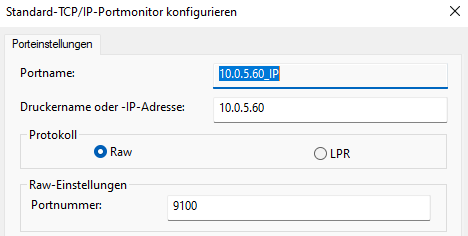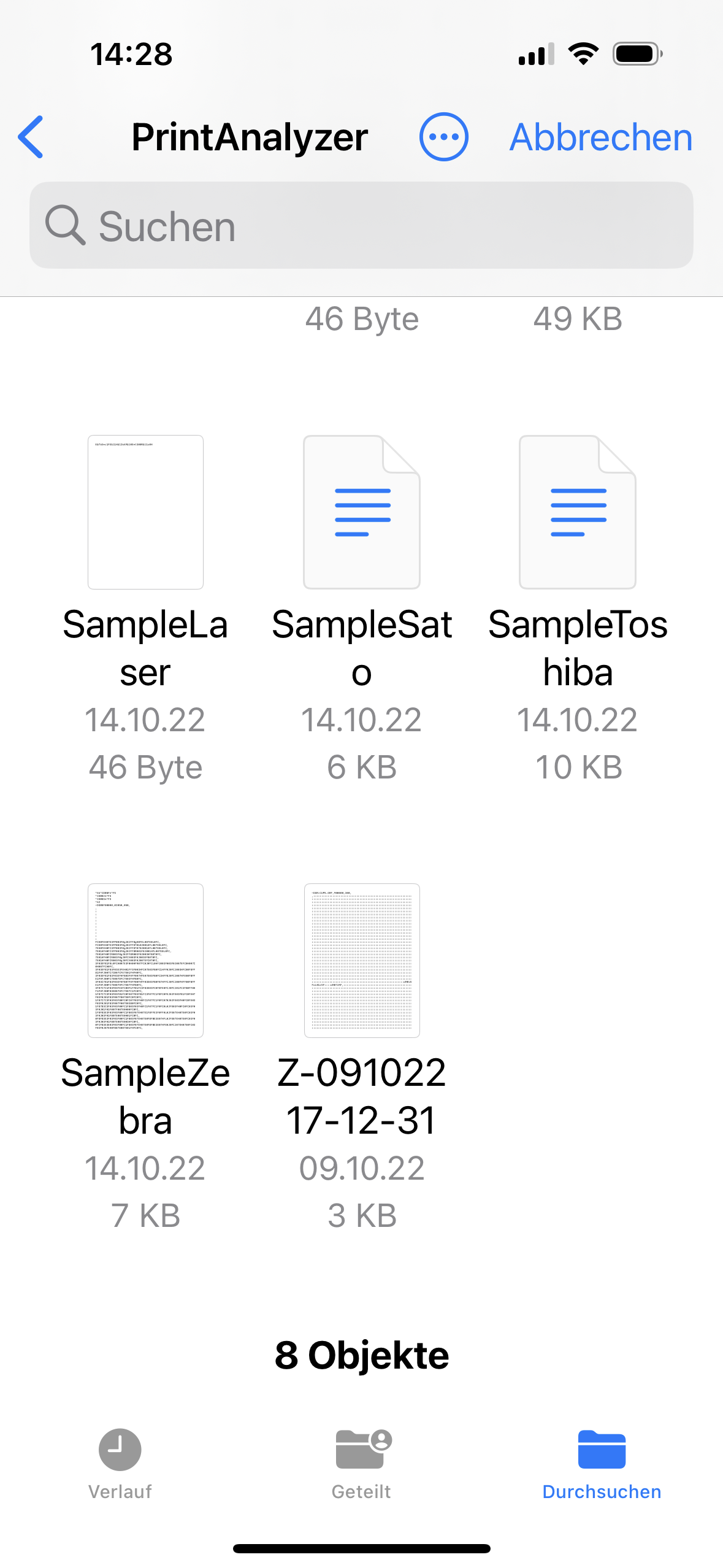
Data Receive
Since the iPhone or iPad always connects to the local network via WLAN, it automatically gets an IP address assigned.
In order for us to be able to receive printer data, the iPhone must be on the same network as the printer. The software starts printing will no longer send the data to a real printer, but to the IP address of the iPhone as printer simulation.

Printer driver settings
Since in most cases analyzed printer output are controlled by a Windows driver, we show the necessary settings here (only German screenshots).

It is important that the printer driver does not expect any responses to received data. The app cannot work with TCP/IP ports that monitor the printer (Port Monitor). Please use a standard TCP/IP port instead and switch off bidirectional communication.
Then set the destination IP address of the printer to the address that is displayed in the PrintAnalyzer for IP simulation.
When you configure the TCP/IP connection, you can set the port. This must match the port in the PrintAnalyzer and note that we only support RAW protocol.

Software Settings
The settings in the PrintAnalyzer are limited to the selection of IP address (if several active ones were found) and the port, which must match the printer driver.
If only one IP address is found, it is pre-selected and has a white background. If there are several addresses, it has a gray background and can be selected. The port is set to 9100 by default, but can always be changed.
Start Data Receive
Once all settings have been made, data reception can be started. If you now start a print job for the printer, the data will be received and displayed. When data transfer is stopped manually, the data is saved locally on the iPhone with a time stamp (if data is available).
When the printer as client has not terminated its connection at this time, it may be that a timeout has to be waited for before the next data reception could start.
Loading Print Files
The PrintAnalyzer can also load files to analyze them. We haven't restricted the selection here, but only data from print files should be loaded.
Besides the commands in such files, there is also binary data. These type of data could result in a large number of control characters, which we also display in some views. With larger files it can happen that views are not filled with data because the amount of data is too large.
There is also access to all cloud providers that are set up in the iOS files app (iCloud, Dropbox...).
